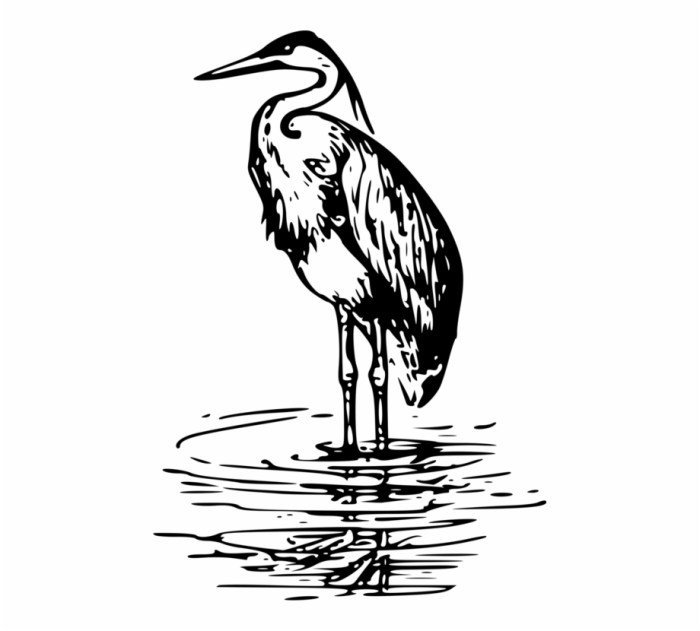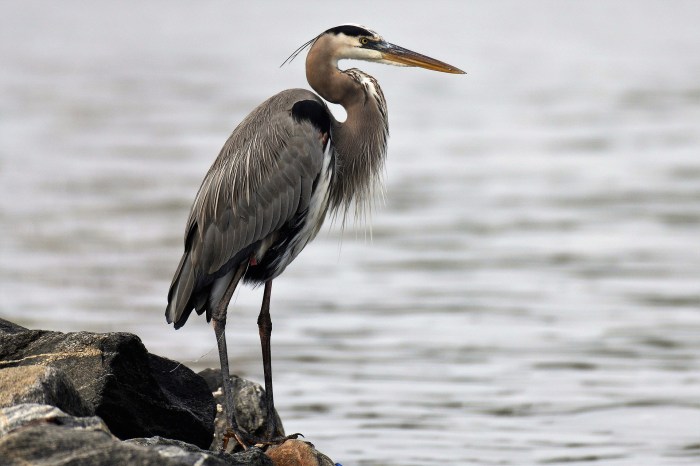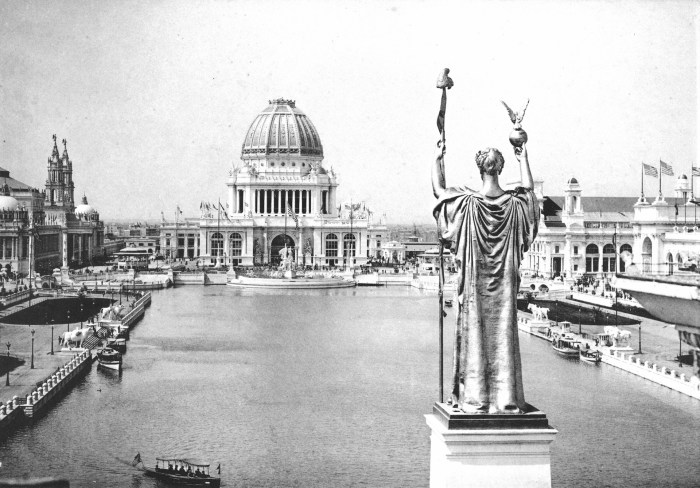Exposition of a white heron – Embarking on an exposition of “A White Heron,” we delve into a captivating narrative that explores the intricacies of setting, character, and conflict, laying the foundation for a profound literary experience.
The story unfolds amidst the serene landscapes of a Maine farm, where young Sylvia faces a pivotal decision that will shape her destiny. As we witness her interactions with the natural world and the complexities of human relationships, the exposition deftly establishes the themes that resonate throughout the tale.
Introduction

The exposition of “A White Heron” sets the stage for the story and introduces its main characters. It establishes the setting, introduces the protagonist, Sylvia, and provides insight into her relationship with nature and her family.
The exposition is significant as it provides the foundation for the story’s conflict and themes. It establishes Sylvia’s innocence and her close connection to the natural world, which is juxtaposed with the harsh realities of adulthood and the expectations of society.
Setting, Exposition of a white heron
The exposition introduces the setting of the story as a rural village in Maine. The description of the natural surroundings, including the lush forests and the vast marshes, creates a vivid and idyllic atmosphere.
The setting is significant as it reflects Sylvia’s close connection to nature and serves as a backdrop for the story’s central conflict between her desire to protect the heron and the pressures of her family’s financial needs.
Sylvia
The exposition introduces Sylvia as a young girl who lives with her grandmother in a small village. She is described as a curious and imaginative child who loves to explore the natural world.
Sylvia’s character is significant as she represents the innocence and wonder of childhood. Her close connection to nature sets her apart from the other characters in the story and makes her the ideal protagonist for a story about the conflict between nature and human needs.
Sylvia’s Relationship with Nature
The exposition establishes Sylvia’s close relationship with nature. She is fascinated by the creatures that inhabit the marshes and spends much of her time observing and interacting with them.
While reading the exposition of a white heron, I couldn’t help but think of the dna word search c 6 answers . The complexity of the heron’s behavior reminded me of the intricate patterns found in DNA. Both the exposition and the word search required careful observation and analysis to uncover hidden meanings.
Sylvia’s relationship with nature is significant as it foreshadows the conflict that she will face later in the story. Her deep love for the heron and her desire to protect it will put her at odds with her family’s need to sell it for money.
Setting
The story of “The White Heron” unfolds in the serene countryside of Maine, amidst rolling hills, tranquil waters, and abundant flora. The tale takes place during the late summer, when nature is at its peak, with lush greenery and vibrant wildflowers.
This idyllic setting contributes significantly to the atmosphere and mood of the story. The natural beauty of the surroundings creates a sense of peace and tranquility, reflecting the protagonist Sylvia’s inner harmony and love for her environment.
Time and Place
- Time: Late summer, when nature is in full bloom.
- Place: Rural Maine, amidst rolling hills, tranquil waters, and abundant flora.
Characters
The exposition of “The White Heron” features a cast of characters who play significant roles in the story’s development.
The protagonist, Sylvia, is a young girl who lives in a rural area with her grandmother. She is curious and imaginative, with a deep love for nature. Her fascination with the white heron symbolizes her longing for freedom and adventure.
Sylvia
- Protagonist
- Young, curious, and imaginative
- Lives with her grandmother in a rural area
- Fascinated by the white heron
Sylvia’s Grandmother
- Sylvia’s caretaker
- Practical and hardworking
- Wants Sylvia to focus on domestic tasks
- Does not understand Sylvia’s fascination with the heron
Conflict

The central conflict that arises in the exposition of “The White Heron” is the internal struggle that Sylvia faces between her desire to keep the heron a secret and her desire to share it with others.
This conflict sets the stage for the rest of the story, as it forces Sylvia to confront her own feelings and motivations. It also foreshadows the challenges that she will face as she tries to protect the heron from the outside world.
Sylvia’s Internal Conflict
Sylvia is a young girl who lives in a rural area with her grandmother. She is a kind and compassionate person, but she is also shy and reserved. When she discovers the white heron, she is immediately drawn to its beauty and grace.
She wants to keep the heron a secret, so that she can enjoy its company all to herself.
However, Sylvia also knows that the heron is a rare and beautiful creature. She believes that others would enjoy seeing it just as much as she does. This conflict between her desire for secrecy and her desire to share the heron with others is a major source of tension in the story.
Theme: Exposition Of A White Heron

The exposition of “The White Heron” introduces several important themes that are developed throughout the story. These include the importance of nature, the conflict between childhood and adulthood, and the power of imagination.
The importance of nature is a central theme in the story. The setting of the story is a beautiful natural environment, and the characters’ experiences in nature shape their lives. Sylvia, the protagonist, is a young girl who loves to explore the natural world around her.
She finds solace and inspiration in nature, and it helps her to escape from the pressures of her everyday life. The heron, a symbol of nature, is a powerful and mysterious creature that Sylvia admires and longs to see. The heron represents the beauty and wonder of the natural world, and it inspires Sylvia to follow her dreams.
Conflict between Childhood and Adulthood
The story also explores the conflict between childhood and adulthood. Sylvia is a young girl who is on the cusp of adulthood. She is beginning to experience the pressures of growing up, and she is struggling to find her place in the world.
She wants to be independent and explore the world around her, but she is also afraid of leaving behind the safety and security of her childhood. The heron represents the freedom and adventure of adulthood, but it also represents the challenges and responsibilities that come with growing up.
Power of Imagination
The power of imagination is another important theme in the story. Sylvia is a imaginative child who loves to dream and create. She uses her imagination to escape from the pressures of her everyday life, and she finds solace and inspiration in the natural world.
The heron is a symbol of Sylvia’s imagination, and it represents the power of imagination to create beauty and wonder in the world.
Symbolism
The exposition of “The White Heron” by Sarah Orne Jewett introduces several symbols and motifs that foreshadow events later in the story.
One significant symbol is the white heron itself. The heron represents Sylvia’s innocence and connection to nature. Its purity and grace contrast with the harsh realities of the adult world, symbolized by the hunters who seek to capture it.
The Forest
The forest is another important symbol in the exposition. It represents the wild and untamed aspects of nature, as well as the mystery and danger that can be found within it. Sylvia’s journey into the forest symbolizes her own journey into adulthood, where she must face the challenges and temptations of the world.
The Hunters
The hunters in the exposition represent the forces that threaten Sylvia’s innocence and connection to nature. They symbolize the greed and destruction that can come from the outside world, and their pursuit of the white heron foreshadows the potential loss of Sylvia’s own innocence.
Foreshadowing

The exposition of “The White Heron” contains several instances of foreshadowing that hint at future events in the story. These foreshadowing elements create a sense of anticipation and suspense, suggesting that the peaceful setting and idyllic atmosphere of the opening are deceptive and that darker events lie ahead.
Sylvia’s Loneliness
Sylvia’s isolation and lack of companionship are foreshadowed by her description as “a solitary child.” This suggests that she may be vulnerable to manipulation or exploitation, as she lacks the support and protection of friends or family.
Literary Devices
The exposition of “The White Heron” is enriched by the skillful use of literary devices that enhance the storytelling and create a vivid impression.
Imagery, metaphor, and simile are employed to evoke a rich sensory experience, allowing readers to fully immerse themselves in the setting and the protagonist’s journey.
Imagery
Sensory details paint a vivid picture of the natural world, immersing readers in the sights, sounds, and sensations of the protagonist’s surroundings.
- The “tall, slender trees” and “long, narrow leaves” of the swamp convey a sense of towering height and dense vegetation.
- The “soft, gray clouds” and “pale, pearly light” evoke a tranquil and ethereal atmosphere.
Metaphor
Metaphors draw comparisons between unlike things, creating unexpected connections that illuminate the protagonist’s experiences.
- The swamp is described as a “great, silent sea,” suggesting its vastness and mysterious depths.
- The protagonist’s encounter with the heron is likened to a “strange, beautiful dream,” capturing the wonder and enchantment of the moment.
Simile
Similes compare two things using “like” or “as,” adding clarity and vividness to the descriptions.
- The heron’s flight is compared to “a slow, graceful dance,” emphasizing its elegance and fluidity.
- The protagonist’s hair is described as “fine as silk,” conveying its delicate texture and softness.
FAQ Corner
What is the significance of the white heron in the story?
The white heron symbolizes Sylvia’s connection to nature and her struggle to balance her own desires with the expectations of others.
How does the setting contribute to the atmosphere of the story?
The rural Maine setting provides a sense of isolation and tranquility, reflecting Sylvia’s inner conflict and her search for self-discovery.
What is the central conflict that arises in the exposition?
Sylvia faces a moral dilemma when she must choose between protecting the heron and fulfilling her promise to her grandmother.